I received the TM10K from Nitecore for the review.
The TM10K is a compact light that is able to give a lot of light thanks to the 6 XHP35 HD emitters, powered by a single 21700 with 4800mAh. The TM10K has a display and 3 electronic switches to control all the functions. The light is rechargeable via USB-C port.
.
.
The TM10K comes in this box.
.


.
.
Inside the box: The light, USB-C cable, sheath, lanyard, manual.
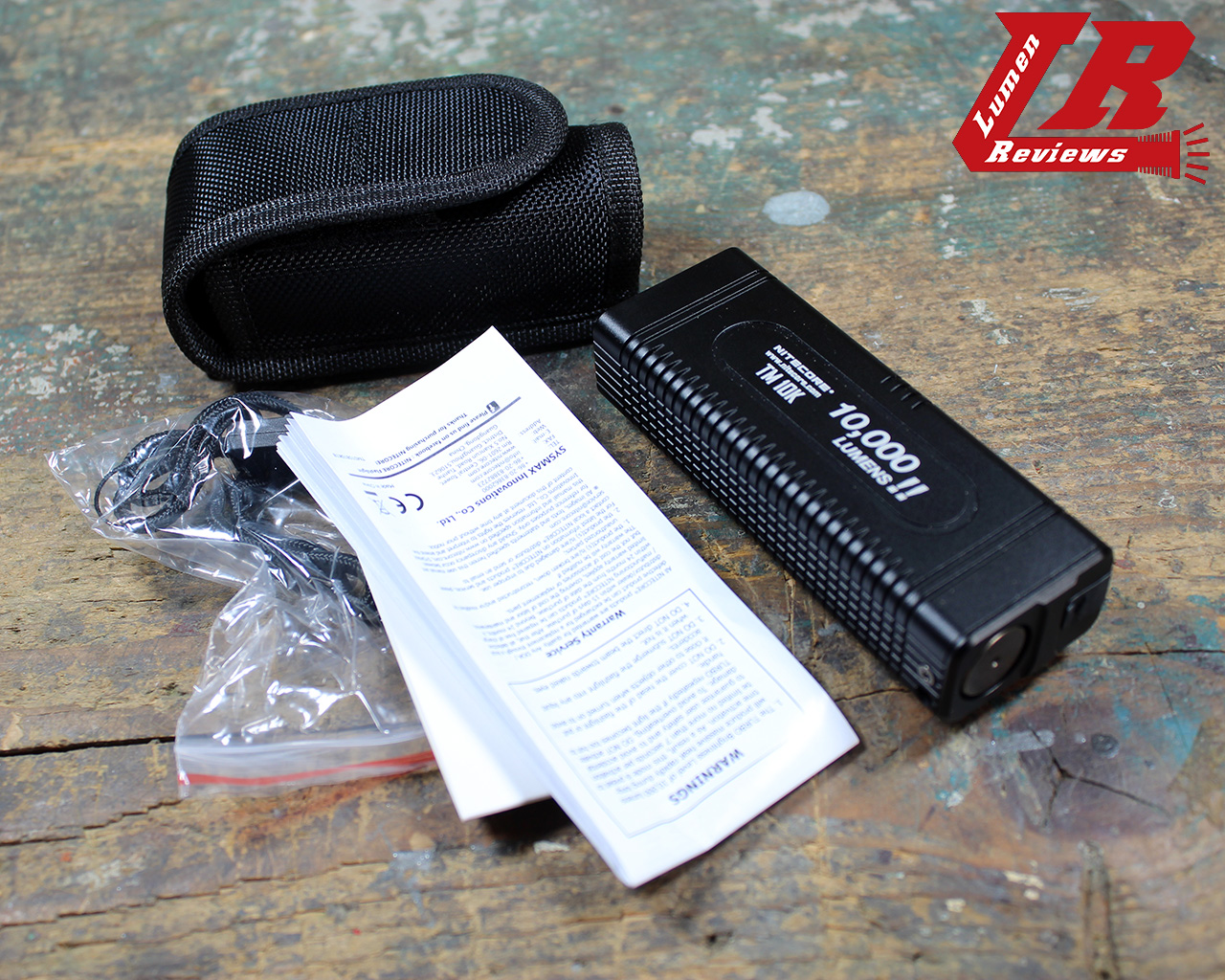
.
.
The TM10K is one of the few lights that has a prismatic design, and it is impressively compact: 110x41x31 mm.

.
.
The clip is secured to the body by 3 screws.

.
.
The TM10K has a narrow profile, and on one side has 2 electronic switches and the display


.
.
The glass comes with a blue adhesive on top to protect it from scratches and dust, I removed before taking the pictures. As you can see, the reflectors are tiny, and the LEDs very big, and so we already know this light will be a floody.

.
.
On the back side of the light, we have another electronic switch (with a blue LED in its center), and the USB- C port for charging.


.
.
Near the back of the TM10K, there is a lanyard hole big enough to accommodate easily 550 Paracord.

.
.
The sheath is in cordura, with Velcro, and it is MOLLE compatible.
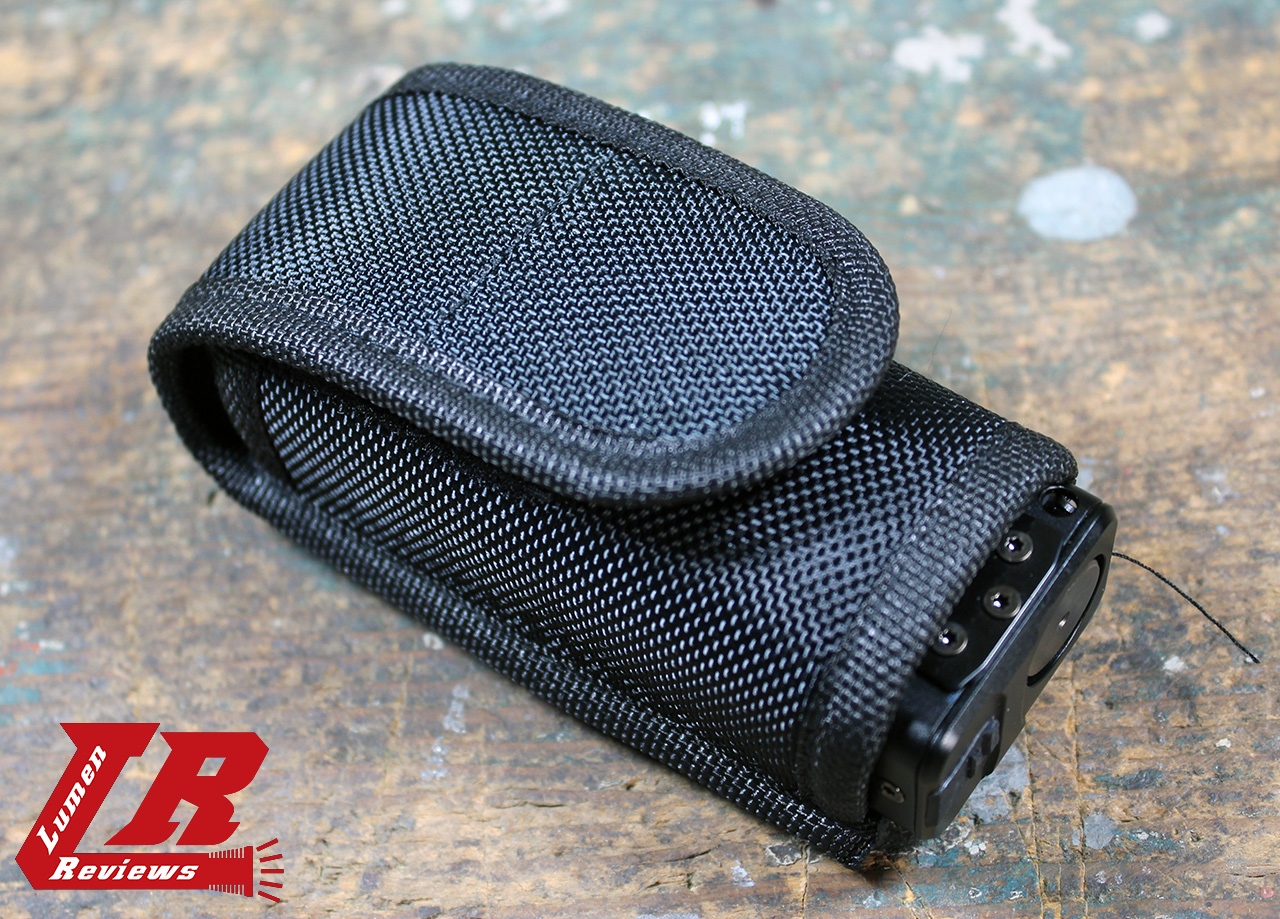
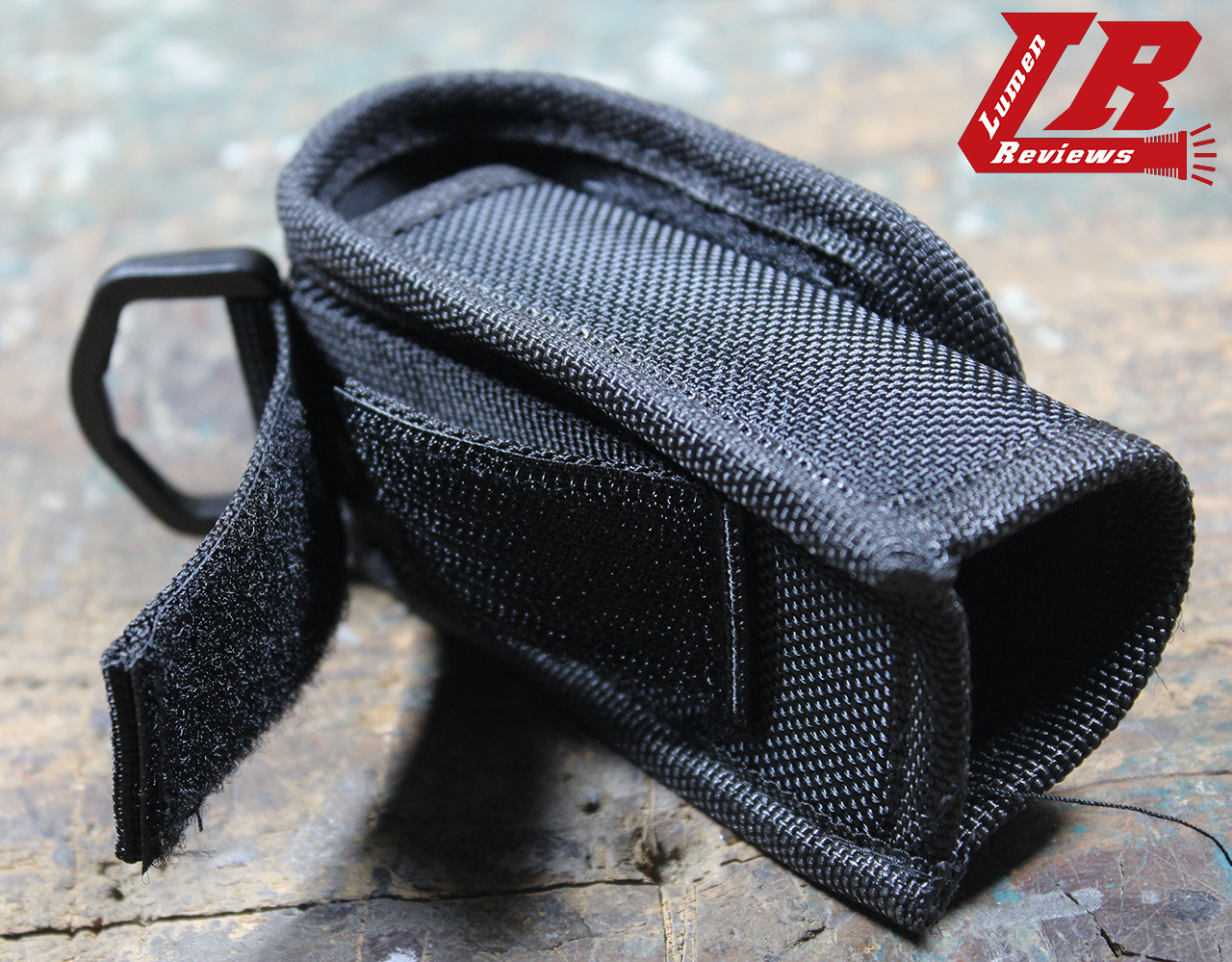
.
.
The UI
I’m going to copy and paste Nitecore’s TM10K UI, and discuss it at the end of the review. For now I’m going say you definitely need to read this manual before using the light.

.
.
.
Beamshots







As you can see, the beam is very wide and it barley reaches the 100 meters mark on the max output. It is a floody light as you could tell from the combination of LEDs and reflector.
.
.
.
Output and runtime.
Now, I spent a lot of time doing these tests. A bunch of tests I hade made had to be thrown away because the standard sampling rate I always used for the tests at high output mode, 2 seconds, allowed an error too big over the 7 seconds duration of the turbo mode.
.
Before going in the plots, I want to clarify a few things, like the turbo mode reactivation.
When your TM10K is fresh, you keep pressed the back switch and you get your turbo mode.
On the display will appear a rectangular bar that will empty out while the Turbo mode is on.
When the bar is completely empty, the Turbo mode will stop. Can you go right back into it? The answer is yes (to be picky you need to wait something like 1 or 2 seconds), but for a few times.
If you immediately let go and press again the switch, you will get into turbo mode again, with the “turbo bar” completely full. And you can play this trick for a few times.
After a few activations, what will happen is that the “turbo bar”, that last time we saw was getting empty, is now completely empty and it will slowly replenish. You can see the display showing this in the video blow.
What is really happening behind this graphic animation is that you can restart the turbo mode as many times as you want, as long as you reach a certain inner temperature.
When that happens, you need to wait for the heat to dissipate and the light to cool down, before using the turbo again, but instead of being an ON/OFF thing, you have the chance of using the turbo again for a limited time that depends on how much the temperature lowered inside the light.
.
So, in practice, you will have a few turbo mode reactivation possible, then the light will need time to cool down and you will have the chance of reactivating the turbo again, for a few seconds (if you wait a bit), or for the full duration of the turbo mode (if you wait until the “turbo bar” is completely replenished).
The time needed for refilling the “turbo bar” will get longer every time, becomes the whole light gradually becomes more hot.
This means that even if you have a fan, or a cooling system, or work in a cool environment, you can’t change the duration of the turbo mode, but you can restart it with shorter delays (needed to cool down the light).
This sad, in my tests, the light at turbo mode becomes brighter as the time goes on if you use a fan, probably because the cells warms up and increases in performance; while without a fan the light doesn’t become brighter.
.
So, let’s start with the output measurements. Fun fact: at the 3 lumens mode, only the middle 2 LEDs will turn on.
I tested 3 of the multiple options of brightness for the High mode, 1000, 1500, 2000 lumens. Keep in mind that I don’t have any professional instruments or settings, and even a small % error will change the final result a lot, when you are dealing with high numbers.

.
.
First, Turbo mode with the Fan

.
.
And here is a magnifications of the first 2 cycles
.
.
Ok, now let’s see what happens during the durations of turbo.
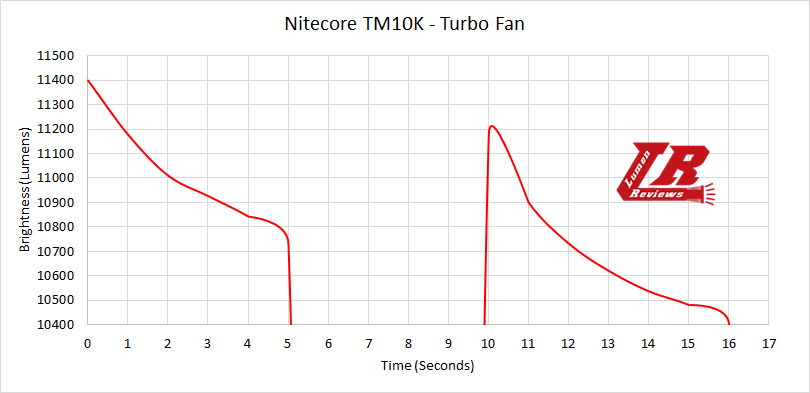
.
.
For the test without a fan, I chose to do a few runs and then turn on the fan to see how that would have changed the time needed to refill the “turbo bar”.

.
.
And here is a magnification of the same plot. You can see that without the fan, the output decreases because the temperature increases at every Turbo cycle.

.
.
1000, 1500 and 2000 lumens mode.
!http://www.lumenreviews.com/Flashlight-Pics/Nitecore-TM10K/Nitecore_TM10K_26.png !
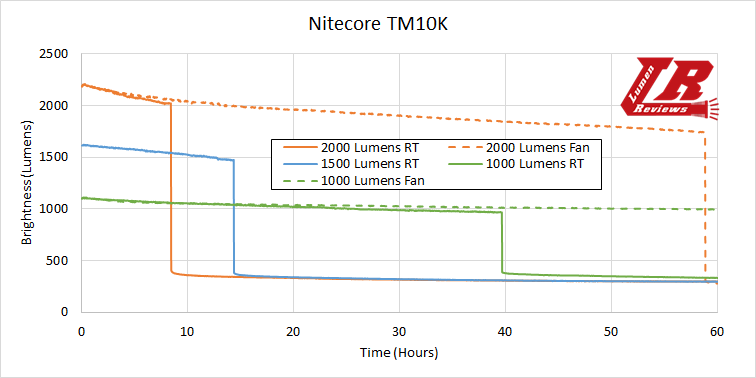
.
.
Here’s a video that shows most of the features of the light, including thermal tests at turbo and 2000 lumens mode at room temperature.
.
.
.
My thoughts
There is a lot to discuss.
The light is well built and finished. I am very impressed by the monolithic construction with the long driver, that helps incredibly the heat transfer. See the thermal tests in the video above.
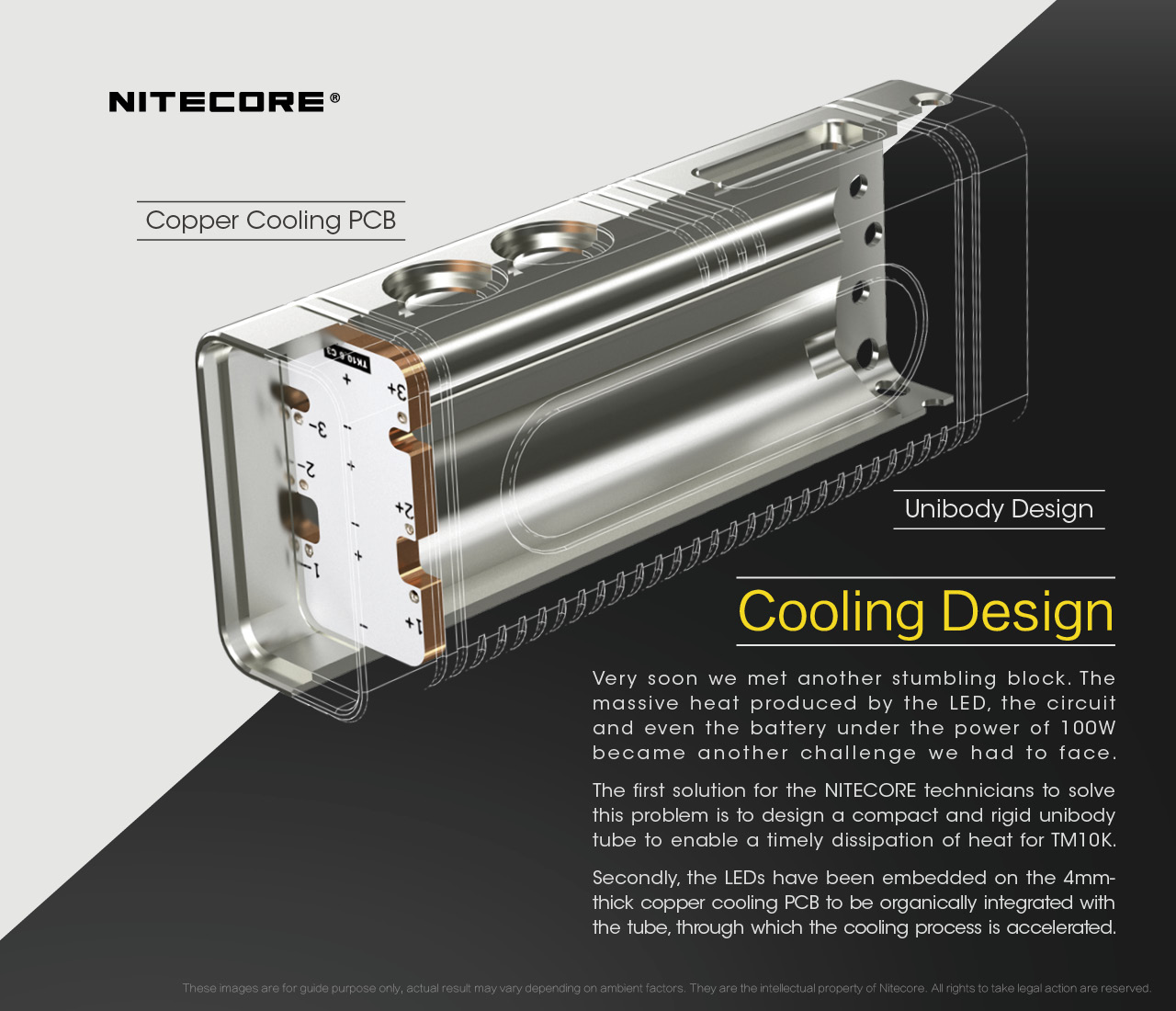

.
.
The heat dissipation is diminished by the small surface area (no fins), but that’s a given, considering how compact it is.
Look at the size of the light, and at the time it can be ran at room temperature with an output of 1000-1500-2000 Lumens, with great regulation.
This will mean, in practice, that if need to have 2000 real lumens in a compact factor, for long time, the TM10K is able to give that for 8 continuous minutes, 14 continuous minutes at room temperature for 1500 lumens, almost 40 minutes at 1000 lumens. And that’s for continuous use. If you need light for 2-3 minutes time spans, this light is able to offer that in a compact form.
.
.
The levels are well spaced and I like that you can choose the high level output. I would have liked to have 1000 lumen constant output and one customizable up to 5-7000 lumens.
Regarding the Turbo mode duration, I would have liked to be longer… but I don’t think it is possible at the current state of technology.
.
.
I like the UI with access last used mode, high and lowest mode. I like the 2 different lockout modes.
The two side switches are smooth and a bit raised from the light’s surface, good thing Nitecore put some knurling around them to better identifying them in the dark. The switch on the back is big and easy to access.
.
.
The TM10K runs on a 21700 but the battery is not accessible (it requires disassembly of the light) and it is soldered. Nitecore claims their early prototypes had a replaceable accessible 21700 but they were able to increase performance by lowering the resistance of the connections soldering the battery.
This choice has its own cons and pros.
The charging aspect, I’ll sum it up with a: get a QC capable charger, or at least a 2.1 Amps charger. It will slow down the charging time significantly.
.
.
The sheath I don’t like it so much. While it’s well built and finished, It doesn’t fit the light well with the clip on (depending on the direction you put the light in, you’ll have a hard extraction or insertion), and in my opinion it should be squared and cover all the sides of the light.
.
.
I don’t know if It is a glitch of my sample, but when running the light at turbo mode for the first times, after the stepdown I can’t restart immediately the turbo, I need to let the switch go AND wait for the battery voltage to rise up. That takes around one or two seconds.
.
.
I would like the display to stay on for a few seconds more. But you can always turn it back on by pressing one switch.
I’d like to have a tripod screw on the TM10K, but I realize things are already pushed to the limits as far as space optimization.
I’d like to see this light in a NW version.
.
.
I wonder, if Nitecore is able to pack so many lumens in such a small size factor… what could be done, in a BIG light? The future will tell.
.
.
Thanks to: AntoLed for the camera help, thermal camera, Zampa for the tripod.
